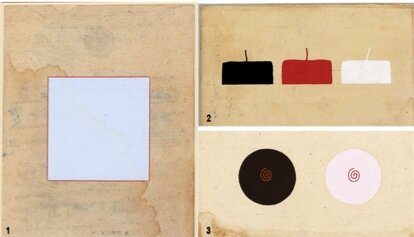Making Space & The Art of Subtraction
Published 17th March 2014 in as SOULSCAPE
One of the first things we learn as kids in a math class is the art of addition. Fast-forward a few years down the track and we’ve all graduated with flying colors. We’ve got ourselves a Masters of Addition. We buy, we collect, we consume, we swap, we take, we build, and we produce - in a nutshell? We add. We are full-fledged experts at it so lets take it a notch up - how much do you dare to subtract, how much can you do without?
The Art of Subtraction
An underlying beauty found in many great works of art lies in the artists’ ability to subtract. Skilled artists are able to distinguish between fundamental elements versus those that are contradictory to the essence of their work. Day and night the artist goes on, with passion and commitment to this task. An endless ritual of perseverance and repetition, until all that is redundant is removed, leaving everything that remains to its rightful place. No frills, no extras, no difference for difference sake, just clarity.
This element of beauty and clarity is something that transcends genres of literature and goes beyond the still canvas. It is something we consciously and subconsciously appreciate within the art of our daily lives, through the objects and people around us. Picture your awe as you observe the graceful movements of a dancer, the humbling manifestations of Mother Nature, the clean structured lines of a classically tailored suit. Beauty through the art of subtraction – it’s a deceptively simple quality that we admire in the world around us, an underlying element that speaks of confidence, awareness and strength. It’s the strong broth of soup that has gone through hours of reduction on the hot stove, the phoenix that rises through the flames, and the humble sensei in the corner who speaks with minimal words but to maximum effect.
1: The purer the consciousness, the bluer and clearer the sky /
2: The three gunas, the ‘qualities’ or conditions of existence – Tamas, Rajas, Sattva /
3: Two Shaligrams, the round forms. In praise of day and night. Revealing the gaze of all manifestation – the pupil, energy itself in spiral form.
Images Source: Tantra Song: Tantric Paintings from Rajasthan by Frank Andre Jamme.
These paintings are the offspring of hand-written, Tantric Hinduism treatises copied over multiple generations, at least until the seventeenth century. When complete, the paintings—made in tempera, gouache, and watercolor on salvaged paper—are pinned to the wall to use in private meditation.
Subtraction, Simplification & Self
Since everything we manifest ‘out there’, in our physical realities stem from ourselves – how does subtraction work within us and to what benefit?
Contemplate back to a time of immense pain in your life. Take a moment to sit and feel into that space...
As heart wrenching as that period might have been (or still is), and as long and dark as the tunnel was– somehow, you’ve survived. Whatever or whoever you once thought was a truly integral part to your survival is now gone, but here you are, still standing somehow. Still whole if you choose to be.
We are, and have the potential to be, so much more than our physical bodies, temporary situations and list of belongings – these elements are not at the epicenter of our beings and we can, if we choose to, strip them away. In the same grain is the classical Vedic text metaphor, which states:
“Every person is like a piece of gold. If you were a gold ring, a gold watch, a gold chain, you could say “I am a ring, a watch, a chain’, but these are temporary shapes. In truth you are just gold – that is your Essence, no matter how the shape changes”
Make Space
So pause. Take a moment to consider what you can afford to subtract in your life – maybe even give something away to someone that you know will make better use of it than yourself. The Japanese create world-class products through their concept of eliminating waste called ‘Muda’. Feng Shui calls upon the regular disposing of useless items as they scatter and deplete our energy. To the Aboriginals of Australia all ‘goods’ were potentially malign and would work against their possessors unless they were forever in motion. To them, ‘Goods’ were tokens of intent: to trade again, meet again, sing, dance and share resources and ideas.
However small the action you take you will be left with a residual space – a shadow to fill up again or a space you choose to keep bare. It may be in the form of a cleaner, emptier room, or maybe you’ve cleared your schedule and have more time on your hands to focus on the things that actually matter.
Make space. Make space in any form. It’s these little bouts of commitments like taking time out for yourself that give us clarity and help to punctuate our road to somewhere else. When we consciously carve out a space for us to go within and reflect it lights a path for us to cross over, beyond the boundary of who we were born into this world as and what we think we are, towards the potential of what and who we can become.
You are the artist of your life. How do you choose to paint your picture?


